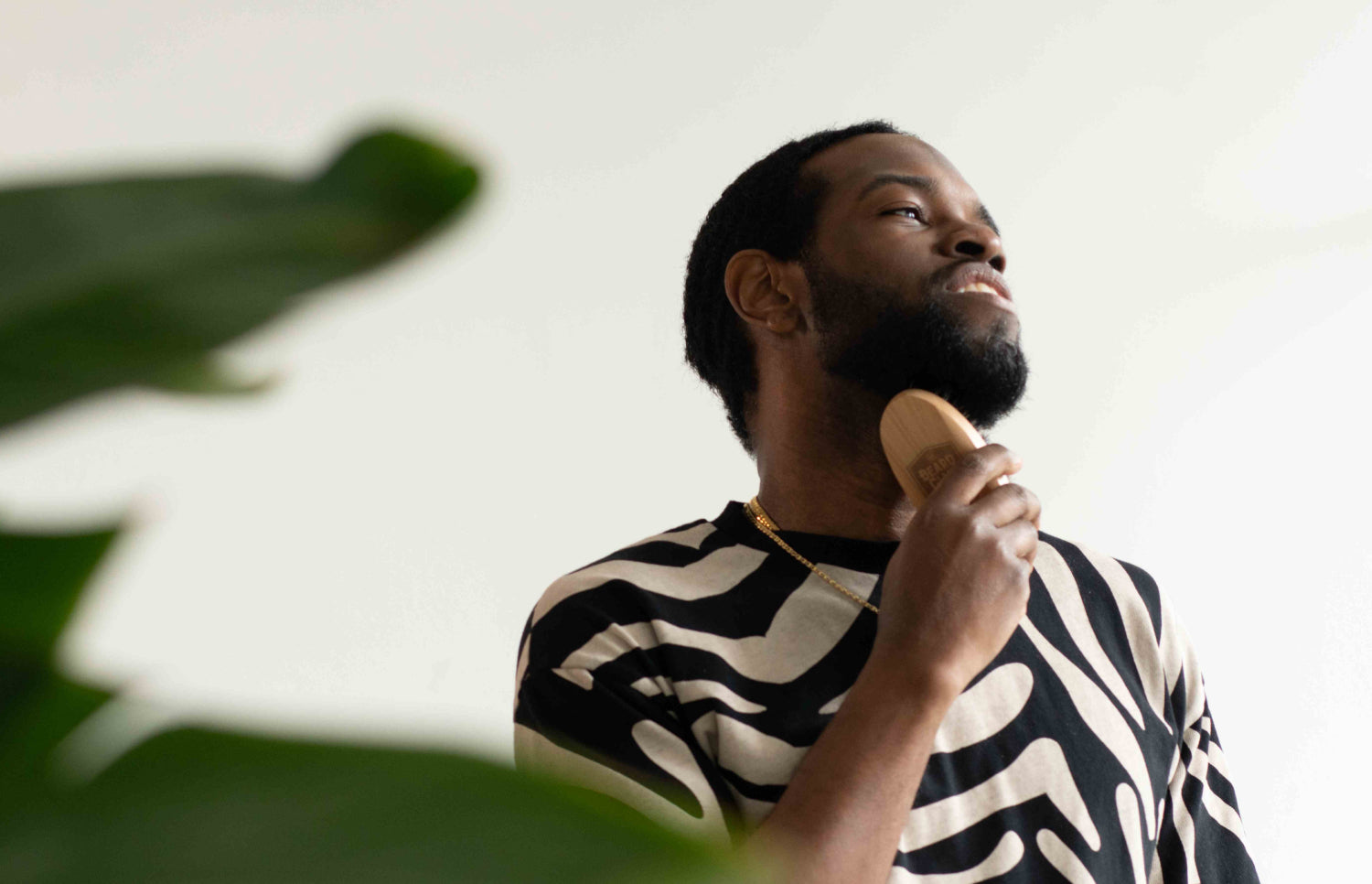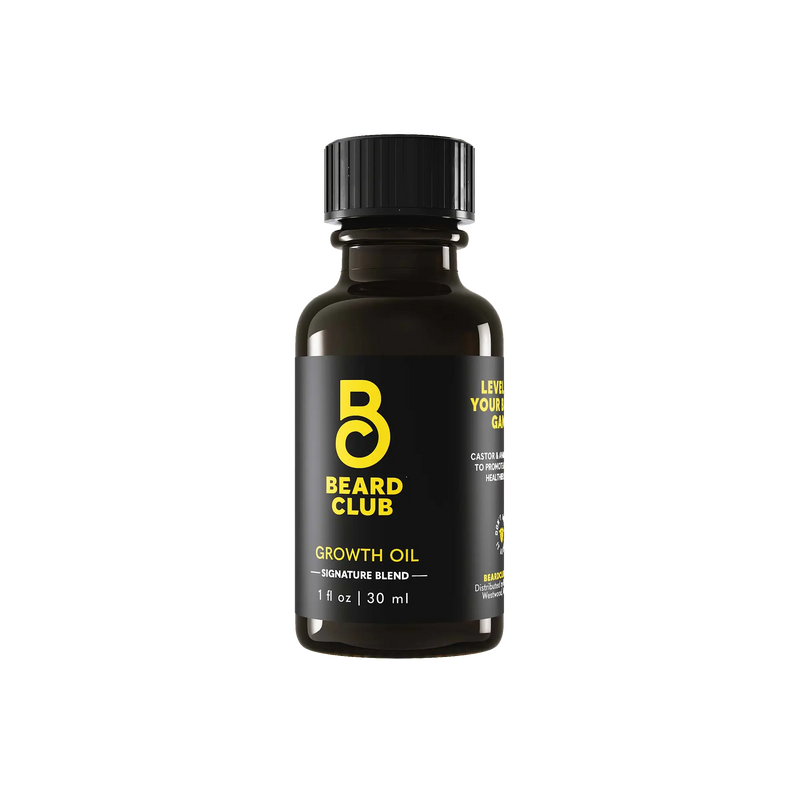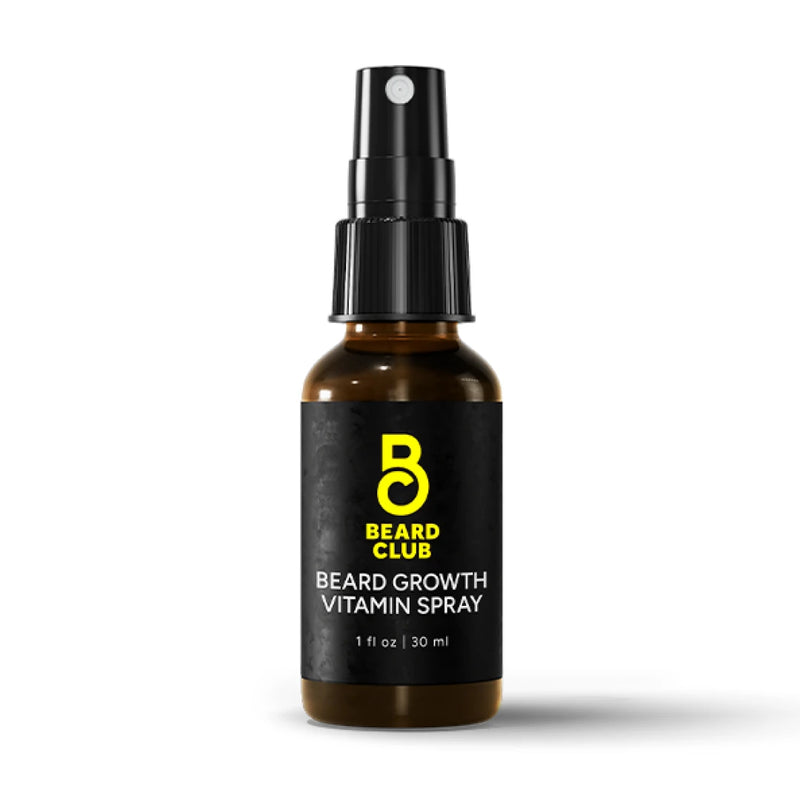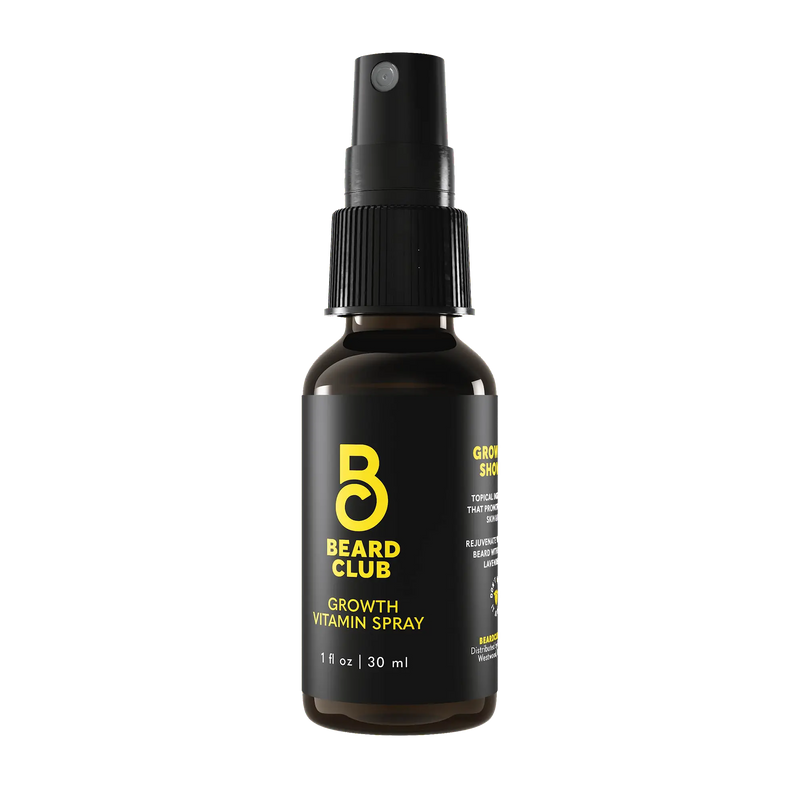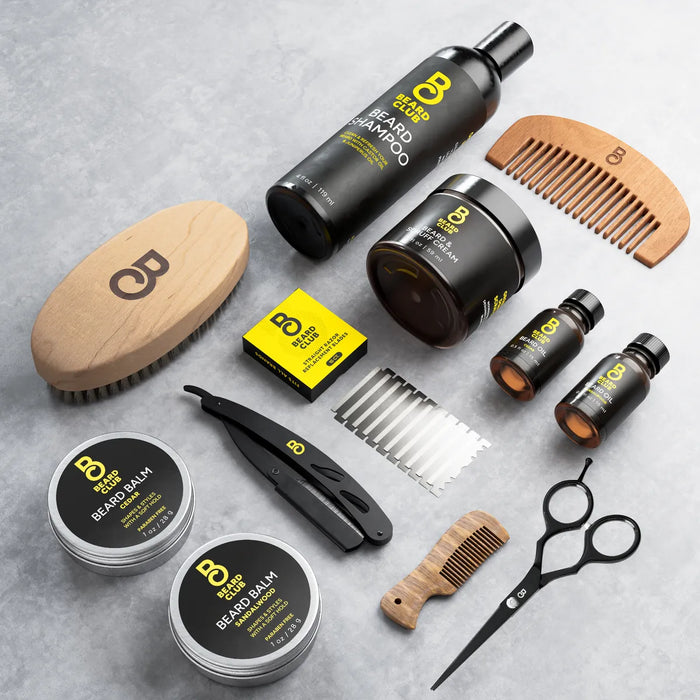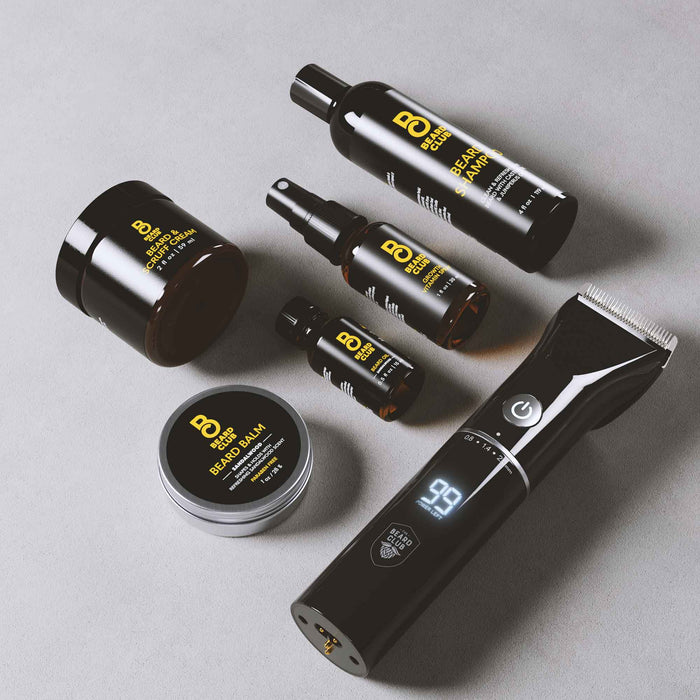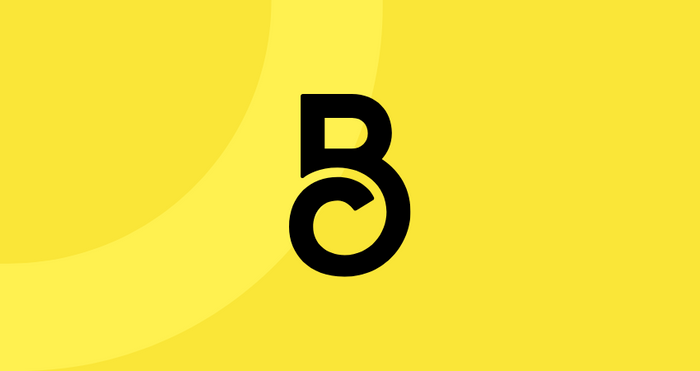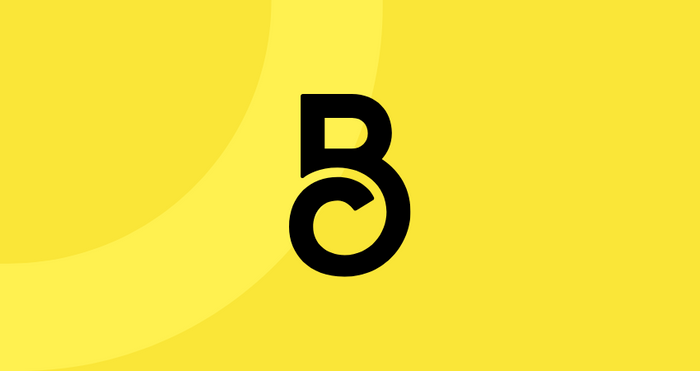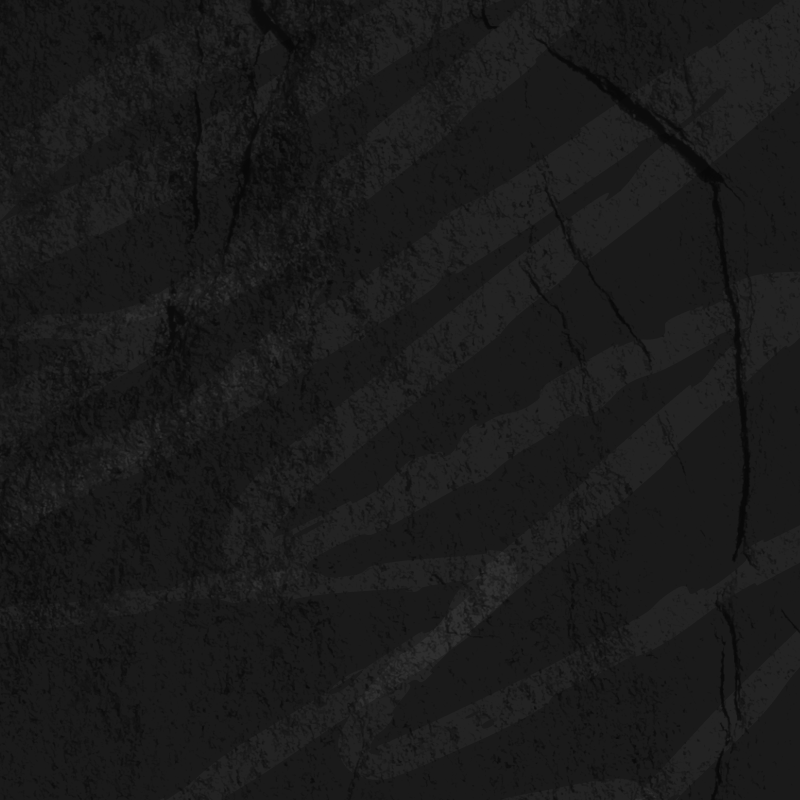Ingrown Beard and Facial Hair: How to Spot and Treat
Welcome to The Beard Club, where we tackle not just the glory of beards but the nitty-gritty of grooming. Today, we're zeroing in on a sneaky little issue that can be a real pain in the beard: ingrown hairs. These pesky intruders can turn your majestic mane into a discomfort zone, disrupting that suave look you've worked so hard to cultivate. But fear not — understanding ingrown hairs is the first step to beating them.
We're here to arm you with the know-how to keep your beard game strong and your skin happier. Let’s unravel the mystery of ingrown hairs together, blending expert advice with practical solutions for the bearded brotherhood.
What Are Ingrown Hairs?
Ingrown hairs are like the uninvited guests of the beard world. They occur when your facial hair, instead of growing outwards, decides to curl back and re-enter your skin. The result? Those annoying little bumps that look like pimples — they're sneaky, sometimes painful, and can put a damper on your otherwise dapper appearance.
Common Areas for Ingrown Hairs in Facial Hair
Let's zero in on where these ingrown hairs typically like to set up camp. Knowing their favorite spots helps you stay vigilant and groom smarter:
- Ingrown Hairs on Face: Yes, the entire face is fair game. These tricky hairs can pop up anywhere from your forehead to your jawline.
- Ingrown Chin Hair: A common battleground. The chin, with its dense growth, often falls prey to these ingrown invaders.
- Ingrown Hair on Lip: The mustache area, particularly above your lip, is a sensitive zone often affected.
- Ingrown Hair in Beard: The main territory. Your beard, as a dense forest of hair, is a prime spot for ingrown hairs to develop.
- Ingrown Hair on Cheeks: Though less frequent, your cheeks aren't immune, especially if you're sporting a fuller beard that extends high up.
- Ingrown Hair Under Chin: The under-chin area is notorious for ingrowns due to its awkward angle for shaving and trimming.
- Ingrown Hair on Neck: The neck, especially the area right below the jawline, is a hotspot for ingrown hairs, given the varying directions in which hair grows here.
- Ingrown Hair in Mustache: Your mustache, like your beard, isn't safe. Ingrowns can sneak in, particularly when you're styling or trimming frequently.
What Causes Ingrown Hair?

The culprits behind ingrown hairs are a mix of natural hair characteristics and grooming habits. Here are some key factors:
Shaving Techniques
Close shaves can cause the hair to retract below the skin and grow sideways. This is even more common when you're pulling the skin taut while shaving.
Tweezing and Waxing
Tweezing and waxing can also cause ingrown hairs. Be mindful of these methods to minimize the risk.
Curly Hair
Those with curly or coarse hair are more susceptible, as the hair naturally curls back towards the skin. It’s so common that it even has a fancy name — Pseudofolliculitis barbae.
Genetic Factors
Your genetics play a role, too. If your family tree includes members with a history of ingrown hairs, you might be more prone to them.
Skin Conditions
Conditions like keratosis pilaris, where the skin produces excess keratin, can also lead to ingrown hairs.
What Are the Symptoms of Ingrown Hair?
Spotting an ingrown hair isn't as challenging as finding a needle in a haystack, but it does require a keen eye. Let’s discuss how to find an ingrown hair.
So, what does an ingrown hair look like? Imagine a rebellious pimple decided to crash your beard party. These little annoyances often manifest as small, red bumps on your skin, much like a pimple. But the twist here is that they often house a trapped hair beneath the skin.
They might appear in your beard area, especially if you shave frequently, but you also might notice them in your armpits, your pubic area, or anywhere else where hair is in abundance, especially if it frequently experiences friction.
Now, what does an ingrown hair feel like? You'll often experience irritation and itchiness, and sometimes, a tender sting that reminds you of its unwelcome presence every time you touch it. These symptoms are a sign that your skin is not too happy about this intruder, and it's sending out an SOS for some care.
Are Ingrown Hairs Dangerous?
While ingrown hairs are more of a nuisance than a grave danger, they do come with their fair share of issues. The most common worry? Infection. When left unchecked, these tiny bumps can become inflamed, turning into painful, pus-filled sores. Not the ideal addition to your face!
How long do ingrown hairs last, you ask? Typically, they're short-term lodgers, resolving themselves within a few days to a couple of weeks. However, if they become infected or repeatedly occur in the same spot (or you find an ingrown hair that won’t go away), it's time to raise the red flag.
Proper skin care and hygiene can often prevent these complications, ensuring that your journey to a magnificent beard isn't hindered by these pesky little hiccups. That said, if your ingrown hair is really sticking around, the next steps might include contacting your healthcare provider.
How To Remove an Ingrown Hair
Dealing with an ingrown hair can be like navigating a tiny minefield on your face. It requires precision and patience. Here are some safe ways to bid farewell to these unwelcome guests:
Regular exfoliation helps to remove dead skin cells, freeing the trapped hair. This step is extra important if you’re trying to remove an ingrown hair you can’t see. Use our Body Wash and Loofa in circular motions to help clear off dead skin for easier picking.
Applying a warm compress (aka a washcloth or towel with warm water on it) softens the skin of the affected area, potentially coaxing the hair out of its hiding place.
If you can see the hair loop, use sterile tweezers or a sterile needle to gently pull it out — no picking! Keep your fingers off it to avoid getting dirt and grime into the area. After removal, apply an antiseptic to the area to prevent infection.
Removing an ingrown hair is delicate work. If it's stubborn or painful, seeking professional help from a dermatologist might be your best bet.
Preventing Ingrown Hairs

To keep those irksome ingrown hairs at bay, a solid prevention strategy is key. Here’s how you can minimize their occurrence:
- Use Proper Shaving Techniques: Avoid going too close. Use an electric razor like our PT45 Trimmer to maintain a little length, reducing the risk of hairs curling back into the skin. This helps prevent razor bumps and irritation.
- Find Quality Shaving Products: Swap out harsh cleansers for our Beard Shampoo and lather up with a shaving cream that's kind to your skin. A good lather can be the difference between a smooth glide and a battleground.
- Moisturize, Moisturize, Moisturize: After shaving, calm your skin with our Sandalwood Beard Balm. It soothes and prevents dryness, keeping beard itch and irritation at bay.
- Hair Removal Wisdom: If waxing is your thing, do it right. Ensure the wax isn't too hot and pull in the direction of hair growth. This reduces trauma to the hair follicle, keeping ingrown hairs under control.
- Lotion Up: Keep the skin in your beard area hydrated with a non-comedogenic moisturizer. Hydrated skin is happy skin, less prone to ingrown hairs.
- Use the Right Tools for a Close Shave: If you prefer a close shave, our Straight Edge Razor offers precision without the aggressive pull. This single-blade razor reduces the chance of razor burn and ingrown hairs.
- Consider Your Hair Growth: Recognize the patterns of your beard hairs. Shave in the direction of hair growth to minimize the chances of hairs growing back into the skin.
- Don't Forget the Aftercare: Finish off with a soothing aftershave or our Cedar Beard Oil to calm any potential irritation and keep the skin supple.
The Bottom Line
Here at The Beard Club, we believe in the power of a well-groomed beard and the need to tackle every aspect of facial hair care — ingrown hairs included. Whether it's choosing the right hair removal methods, wielding a reliable shaver, or avoiding the pitfalls of plucking, it's all about making smart choices. A little mindfulness goes a long way in protecting the surrounding skin from these undercover beard foes.
Keep these tips in your grooming arsenal, and you'll be well on your way to managing — if not outright avoiding — the hassle of ingrown hairs. Stay sharp, stay informed, and, as always, keep your beard game strong!
Sources:
Ingrown Hair: What It Looks Like, Causes, Treatment & Prevention | Cleveland Clinic
How To Get an Ingrown Hair Out at Home | Cleveland Clinic
